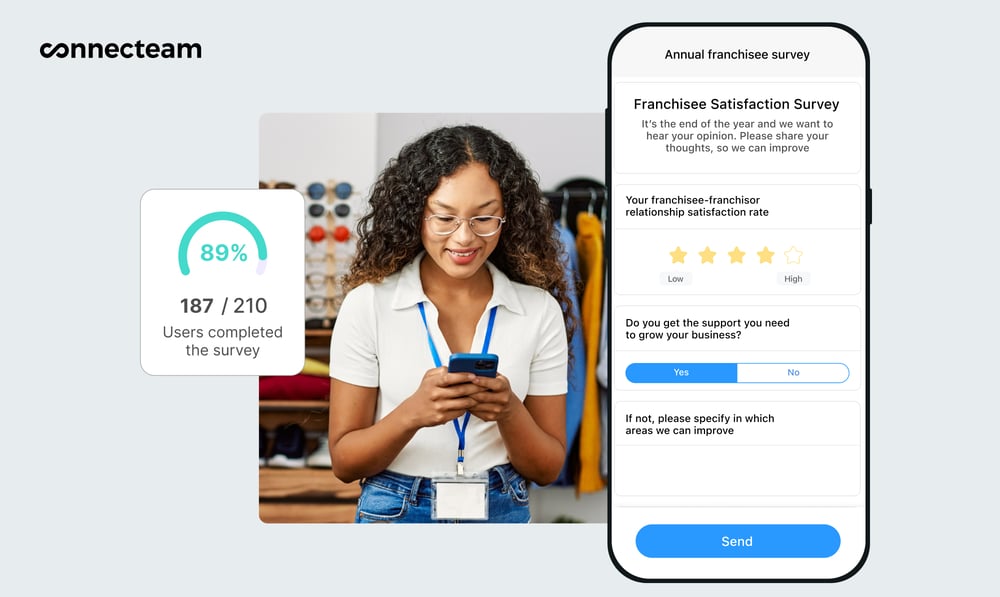Employees are motivated by more than money—flexible working arrangements, individual praise, and extra time off are all strong employee incentives. We look at 14 non-monetary rewards you can put in place to boost employee engagement and productivity.
Disengaged and dissatisfied employees can be a huge drain on a business. Lower productivity, increased turnover, and higher rates of absenteeism affect your bottom line. Employers often turn to monetary incentives such as bonuses and commissions to address these issues. But these incentives require a lot of financial planning and a budget to match.
The good news is that non-monetary incentives can be just as effective in motivating and retaining employees. In this article, we look at 14 non-monetary rewards to boost employee morale and motivation, celebrate your staff, and foster a culture of recognition.
What Is a Non-Monetary Reward or Incentive?
Non-monetary rewards and incentives are non-financial perks offered to employees. Unlike monetary employee incentives and rewards, they don’t involve a financial payment.
Some non-monetary rewards still involve a cost to the employer. For example, an employer covers the cost of extra paid time off (PTO) given as an employee reward. But the main benefit to the employee isn’t financial—it’s more time to spend with their family and friends.
Many popular employee benefits are non-monetary rewards. These include flexible working arrangements, professional development opportunities, and time off for volunteering. Other non-monetary rewards examples include thank-you cards or emails and professional development opportunities.
Non-compensation rewards and incentives are powerful tools for motivating employees. As an employer, you can use them to recognize the achievements of an individual, a team, or the entire company. They’re also a useful tool to build employee loyalty and retain your workforce.
Many businesses use a combination of monetary and non-monetary compensation to recognize their employees. Both can increase employee engagement, morale, and productivity. But non-monetary incentives can have an immediate and long-lasting impact on employees. They may even provide stronger motivation than monetary rewards—and with less cost involved.
The Benefits of Non-Monetary Incentives
Increased employee engagement and retention
Non-monetary perks have a significant impact on employee job satisfaction and engagement. According to McKinsey, using non-financial rewards to motivate employees can lead to a 55% increase in engagement and improve the overall employee experience.
Non-monetary rewards give employees a sense of purpose, autonomy, and mastery. When they’re recognized for their contributions, employees feel accomplished and satisfied. This makes them more engaged and motivated to do even better work.
Using non-financial rewards to motivate employees also has a direct impact on your ability to retain top talent. Employees who feel they don’t receive enough recognition are twice as likely to say they’ll quit in the next 12 months. But an effective incentives program that includes non-compensation rewards can help reduce employee turnover.
Improves employee well-being
Many non-monetary incentives and rewards support employee well-being. These include things like extra time off, public and private employee recognition, flexible working arrangements, and fringe benefits. These provide employees with a better work-life balance and help prevent burnout.
Importantly, employees highly value employers that prioritize staff well-being. For Gen Z and Millennial workers, it’s the top criteria they look for when choosing an employer.
Lasting impact
Non-monetary rewards for employees can have a longer-lasting impact on employees than one-off monetary rewards.
Cash incentives risk becoming “lost” in employees’ wages. Employees may not make a long-term distinction between their regular salary and incentives such as bonuses.
Non-monetary rewards, on the other hand, are easy to separate from wages. This makes them a more memorable reminder of an employee’s efforts and the recognition they received for them.
Contributes to company culture
Non-monetary incentives and rewards are an excellent way to express your business’s core values and culture. They’re more personalized than monetary rewards and can be tailored to support your company culture.

Additionally, non-financial rewards for employees highlight what success looks like in your company. When employees see good work rewarded with meaningful recognition, they’re motivated to follow suit. Plus, building recognition into your company culture creates a more positive work environment—meaning employees are more likely to stay for longer.
Easy and cost-effective
Non-financial rewards for employees are often easier to implement than monetary rewards. Giving financial incentives to your employees typically requires more planning, budgeting, and other administrative work.
Non-monetary incentives, however, can be delivered more quickly. For example, it takes only a few minutes for a manager to write a thank-you email to a team member who worked extra hours to complete a project.
This helps you recognize and reward employees in real time. Immediate rewards and incentives have a greater impact, too, as employees can see a direct link between an action and its reward.
There’s also less cost involved in non-compensation rewards, which makes them a budget-friendly option for your business. Similarly, while cash incentives and rewards are typically taxed, many non-monetary incentives aren’t. This provides better value for your employees.
The Challenges of Non-Monetary Incentives
It’s also important to understand the potential challenges of non-monetary incentives:
- Choosing what incentives to offer. All employees are different, so take the time to understand what motivates them. You can then tailor your rewards and recognition program to your workforce and individual employees.
- Gauging employee expectations. For example, your employees may not appreciate receiving only non-monetary incentives when your business is experiencing financial success. Consider your employees’ expectations about non-monetary incentives and when they’d most like to receive them.
- Communicating the value of non-monetary incentives. There’s a risk that, on paper, employees may view non-monetary incentives as less valuable than monetary ones. To avoid this, communicate your rewards program to your employees and explain why certain incentives are offered.
- Measuring effectiveness. Non-monetary incentives are often intangible, which can make it difficult to measure and quantify their effectiveness. You can address this by collecting feedback from your team about what they like or dislike about your business’s rewards and recognition program.
- Ensuring incentives remain relevant. Some rewards can become irrelevant or feel outdated as your employees’ and business’s priorities change. It’s important to regularly review and adjust your rewards to ensure they remain relevant and effective.
Tips for Implementing Non-Monetary Incentives
Get to know your employees
Your employees are unique, with personal preferences when it comes to recognition and rewards. While one person thrives on public praise, another may be uncomfortable in the spotlight.
When designing a non-monetary incentives and rewards program, consider what your employees want. Managers can ask them directly, or you can use an employee survey tool to find out. Tailoring rewards to employees at the individual or team level makes them more meaningful and effective.

Ensure your incentives are fair and transparent
You don’t have to give identical non-financial incentives to each employee, but it’s essential that you deliver recognition and rewards fairly and transparently.
It helps to set out clear criteria and guidelines for non-monetary incentives. This encourages trust and participation in your incentives program and reduces the risk of employees accusing management of favoritism.
Additionally, you need to ensure your non-monetary incentives are inclusive. Incentives that purposely exclude a group of employees will have the opposite effect and demotivate employees. For example, hosting work events only in the mornings prevents those who work later shifts from participating.
Rewards and recognition systems should also take Diversity, Equity, and Inclusion (DEI) into account. Discriminatory non-monetary incentives are illegal.
Check any tax requirements
While many non-monetary incentives aren’t taxed, some may still have tax implications. For example, extra PTO and some fringe benefits are taxed at the federal level in the US.
It pays to seek professional advice before implementing non-monetary reward systems. This way, you can confirm whether there are any relevant federal, state, or local laws or regulations that may apply.
Use a digital rewards and recognition app
Using an app is a convenient and central way to manage non-monetary reward systems. For example, you can use an app to run your employee-of-the-month program, add time off to employees’ schedules, or recognize employees’ achievements.
Full-featured employee recognition apps, such as Connecteam, allow employees to join in celebrating their colleagues’ contributions. They can share praise publicly or privately, according to the individual’s preference.

Apps also improve the visibility of non-monetary reward systems. Employees can see how management rewards staff and are likely to be motivated when they see others being recognized for their hard work.
Boost employee motivation with recognition and rewards!
Try Connecteam 100% free for 14 days
14 Non-Monetary Rewards Examples
Here are 14 of the best non-monetary rewards in the workplace.
Extra PTO
Employees will appreciate more time off for a better work-life balance. Consider giving them a day off for their birthday or completing a big project. Some companies offer summer Fridays off or the occasional well-being day. Not only does this improve employee morale, but your employees also return to work refreshed and more productive.
Flexible work arrangements
Flexibility around when and how your employees work is a great non-monetary incentive. This can include adjusting their work hours and schedule—for example, starting and finishing shifts later, or working longer days across a shorter work week. Like extra PTO, this helps employees maintain a better work-life balance.
Time off for volunteering
Giving employees time off to volunteer with a charity of their choice benefits them and your business. Employees have time away from work and are intrinsically motivated by contributing to a good cause. Plus, it’s a good corporate social responsibility initiative.
Time to work on personal projects
Offering your employees time to spend on a work-related project of their choice gives them the freedom to create and experiment outside of their daily tasks. But it isn’t just a great reward for them—it can also directly benefit your business. For example, Google offered employees regular blocks of time to work on personal projects, which led to the development of some of the company’s most successful products.
Increased autonomy
Allow employees greater decision-making and independence when it comes to how they work. For example, let employees request preferred shifts, choose their job sites, or manage their daily to-do lists. This creates a culture of accountability and helps your employees feel empowered and motivated.
Public recognition
Another non-monetary incentive is acknowledging employees’ contributions or achievements in a public setting. This could be through an employee-of-the-month award, a profile in your company newsletter, a shoutout in a team-wide email, or a post on social media. Public recognition is a very convenient non-monetary incentive, as it takes just a few minutes to deliver.

Private recognition
Not all employees are comfortable with public recognition and prefer to be recognized in a more private setting. For example, you can privately recognize employees’ accomplishments by writing a thank-you card or sending a personal email or message.
Professional development opportunities
For instance, you could offer employees training or courses for upskilling, cross-skilling, or horizontal growth. In addition to rewarding employees, career development can be a powerful incentive for retaining your most talented workers. Employees will feel appreciated when employers invest in their professional growth.
Increased leadership responsibilities
You can also reward employees with increased leadership responsibilities in their current role. Examples of this include asking an employee to mentor a more junior team member or act as the lead on a task or project.
Mentoring opportunities
The chance to connect with more senior colleagues is a powerful motivator for employees. Consider offering them mentoring opportunities—for example, through a job-shadowing or peer-coaching program. Not only does this benefit your employees, but it also grows talent within your business.
One-to-ones
Another way to recognize and reward employees is to provide one-to-one time with managers or supervisors. This builds better employee relationships and gives employees an opportunity to raise any concerns, making them feel heard.
Experiential Rewards
Organizing an experience outside of work is another way to reward your employees. It gives them a break from their regular work environment and presents a team-building opportunity. This is especially useful for teams who have limited interaction with coworkers who work at different job sites or during different hours. Sports events, cooking classes, or museum visits are some ideas.
Fringe benefits
Fringe employee benefits are nonmonetary rewards or extra perks you provide employees. Some employers provide access to free counseling services or allow personal use of a company vehicle. Incentives like these also increase job satisfaction and reduce absenteeism and turnover.
Work events
Events like team lunches, trivia nights, fun days, or conferences are a great way to reward employees collectively. They also offer a team-building opportunity, giving employees the chance to get to know each other better.
Motivate and Retain Your Employees with Non-Monetary Incentives
When it comes to motivating and retaining your employees, monetary rewards aren’t the only option. Non-monetary rewards for employees—such as individual praise, flexible working options, and work events—can be just as effective.
The best approach is to use a mix of monetary and non-monetary incentives in your recognition program. You should also tailor your incentives and rewards program to individual employees.
The 14 best non-monetary rewards in the workplace discussed in this article are a good starting point for motivating employees.
A more motivated workforce increases productivity and encourages employees to stay with your business for longer, meaning more success for your business in the long run.




